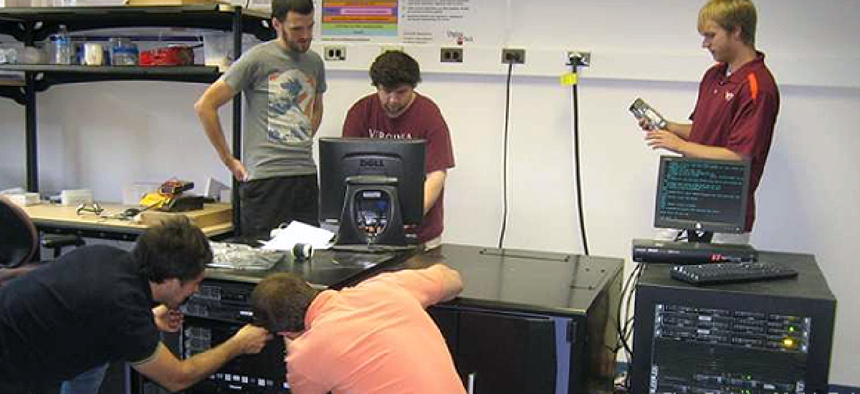Popcorn Linux OS gives processors a common language


Connecting state and local government leaders
Developed by engineering researchers at Virginia Tech with support from the Office of Naval Research, Popcorn Linux may make it easier to upgrade and maintain complex, multicore systems.
Thanks to a new operating system called Popcorn Linux, the Navy may be able to speed systems development and cut maintenance.
Developed by engineering researchers at Virginia Tech with support from the Office of Naval Research, Popcorn Linux can compile different programming languages into a common format.
The operating system takes generic coding language and translates it into multiple specialized program languages. Then it determines what pieces of the code are needed to perform particular tasks and transfers these instruction “kernels” (the “popcorn” part) to the appropriate function, ONR officials said.
Chips for video systems might be programmed in one language and those for networking functions in another. These multicore processors improve computing speed, but they also force programmers to design or upgrade applications based on what programs run on which processors. That means complex systems like battlespace awareness and artificial intelligence that require specialized processors must be manually adjusted so components can interact with each other.
Additionally, as new, more powerful processors become available, developers want to be able to integrate those components into legacy systems without rewriting applications.
Popcorn Linux aims to close the growing gap between performance and programmability by clustering heterogeneous processors and combining their different strengths. This strategy has several advantages, according to project leader and engineering professor Binoy Ravindran. "Many applications have diverse computational patterns," he said. "By running code components on matching processors, you can boost performance or reduce energy consumption."
“By applying Popcorn Linux to longtime, legacy Navy and Marine Corps computer systems, we can improve software without requiring thousands of man-hours to rewrite millions of lines of code,” said Wen Masters, head of ONR’s C4ISR Department. “This could yield significant savings in maintenance costs.”
Popcorn Linux is still a proof-of-concept prototype, but the system is about to enter a new phase of development.
“In our lab and academic setting, we’ve demonstrated that Popcorn Linux works well with respect to performance speed and power usage,” said Ravindran. “Later this year, we’ll work with industry partners to create a version of Popcorn Linux that can meet the strenuous industrial standards required by the Navy and Marine Corps.”
More on Popcorn Linux is available here.
NEXT STORY: A case-by-case DevOps strategy





